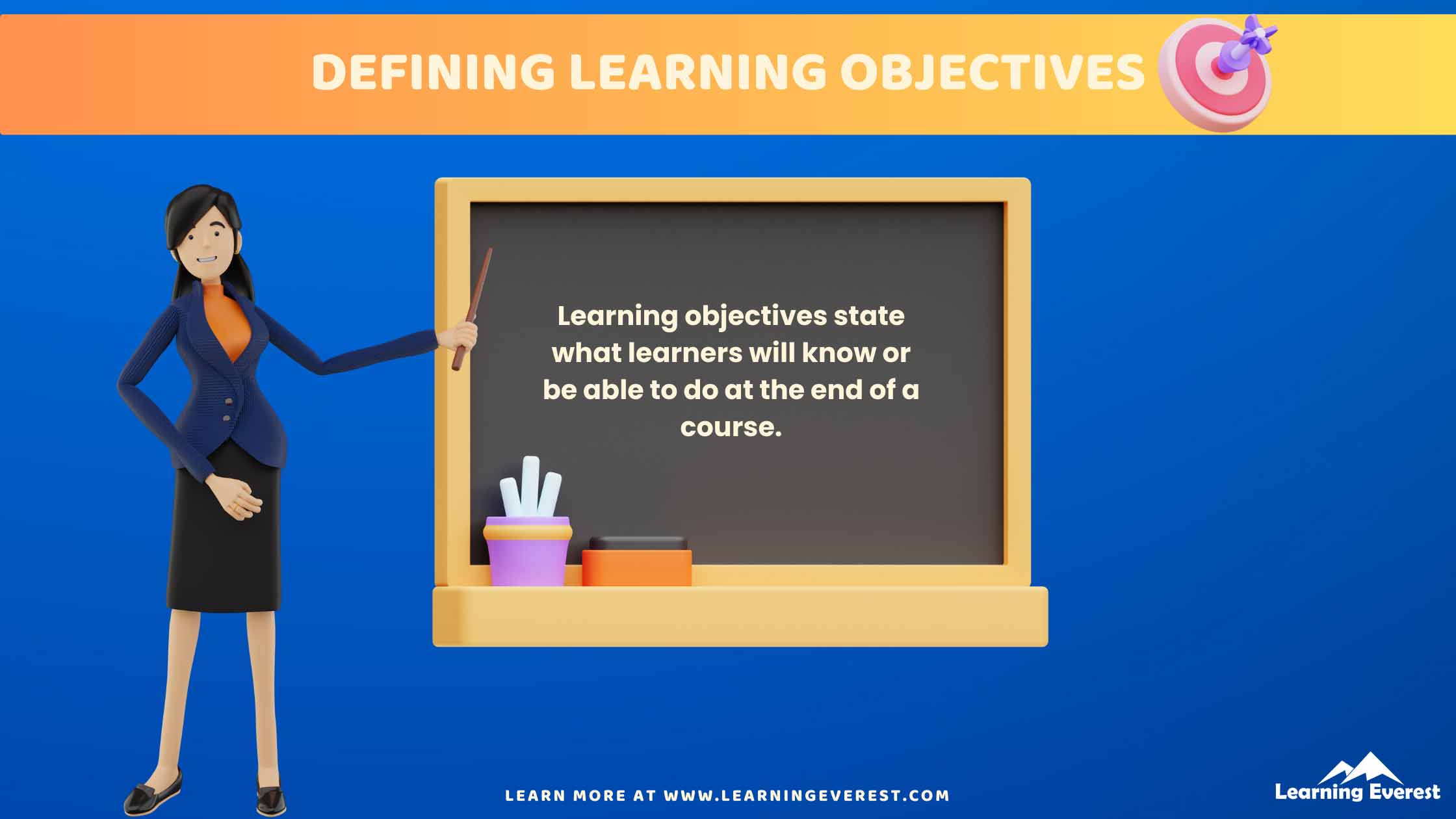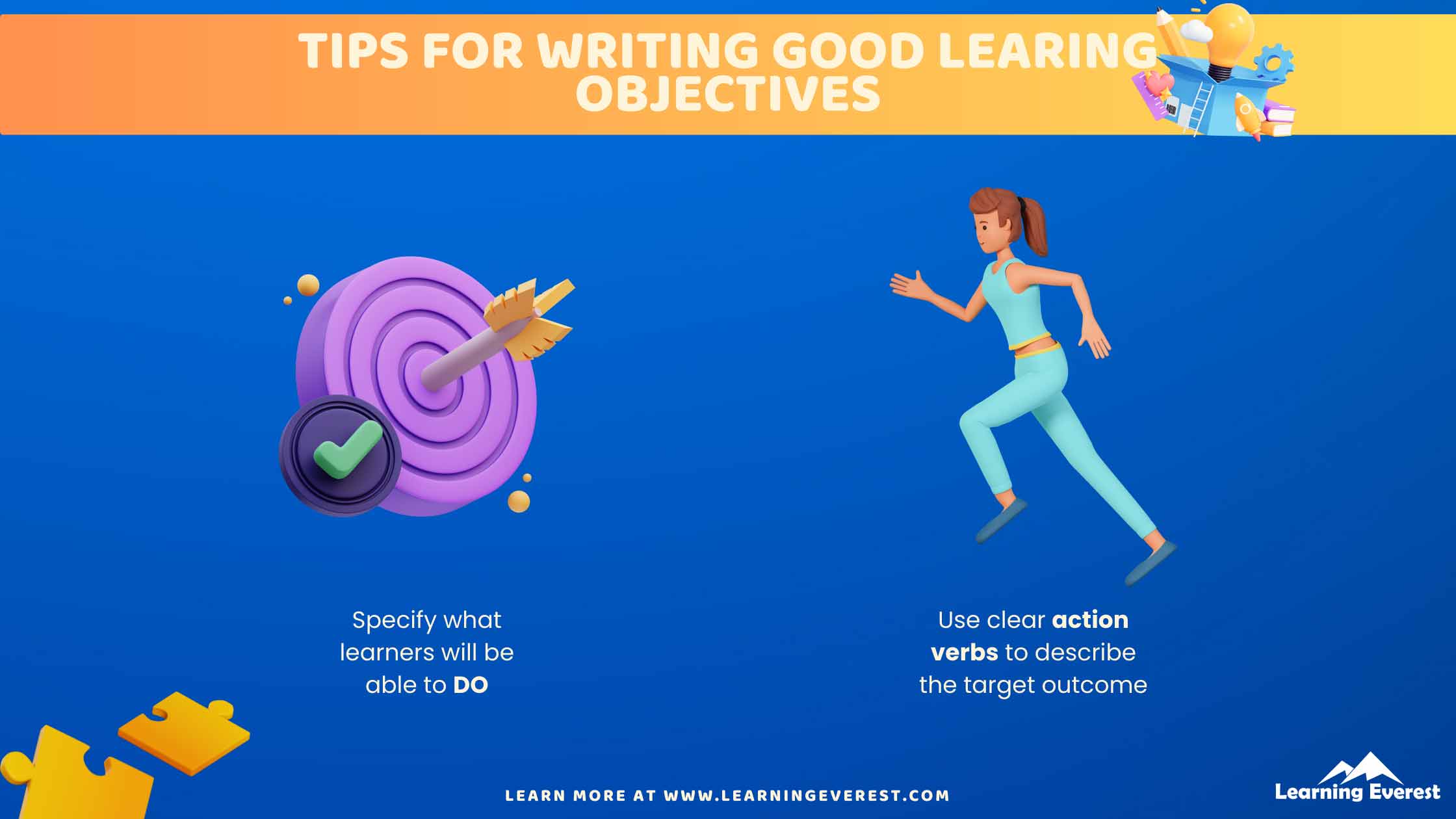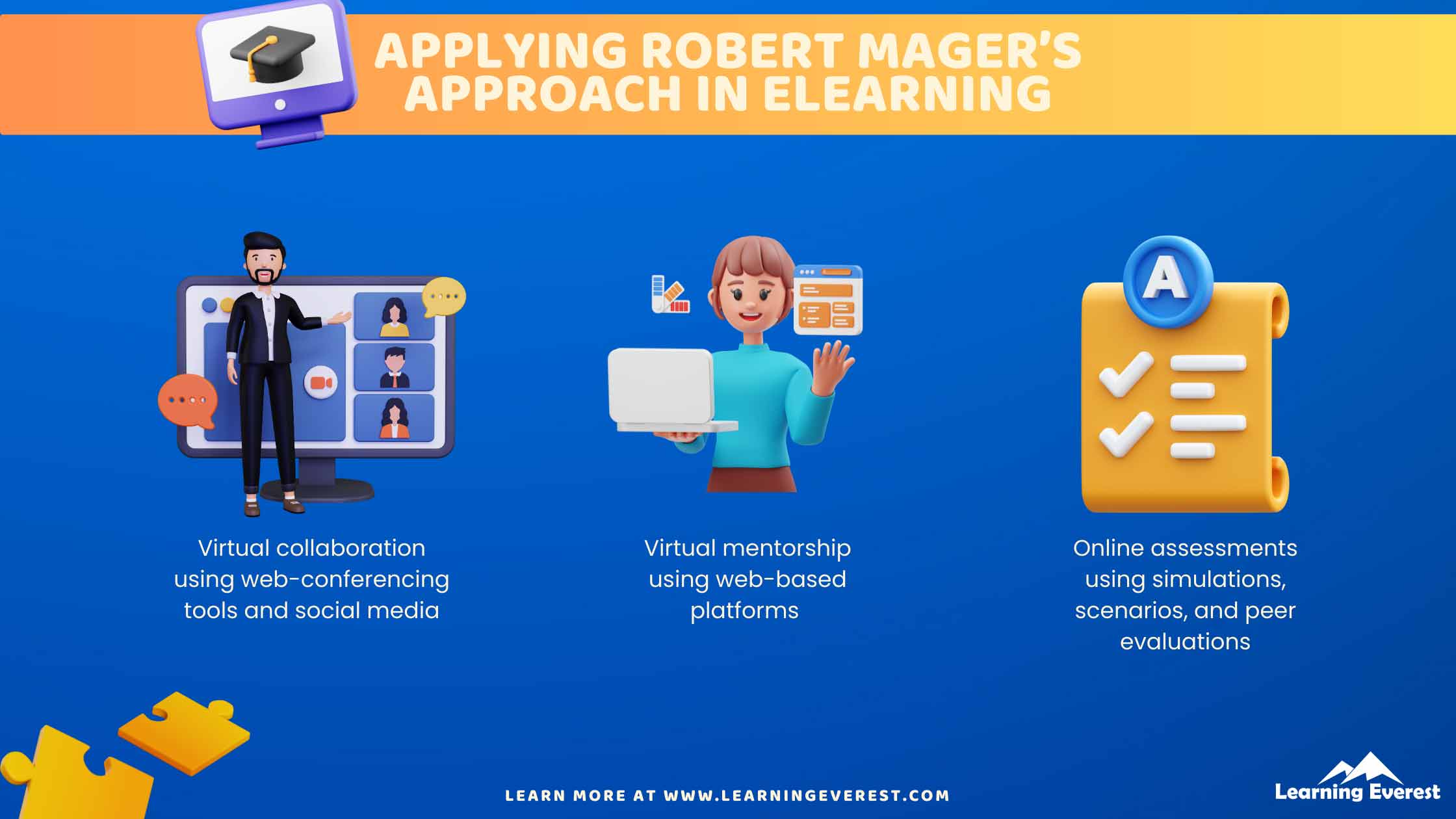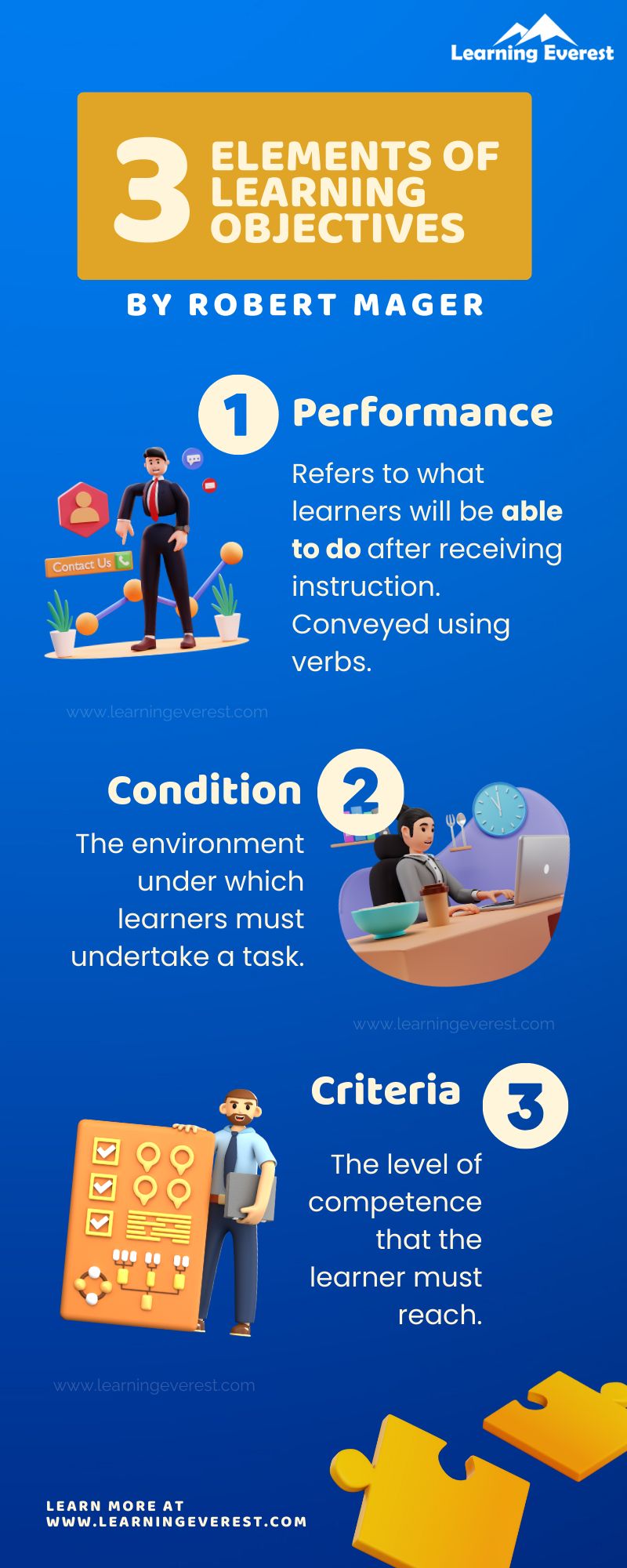Do you know how to write the learning objectives correctly and how Robert Mager’s Performance-based learning objectives can be used? In designing an eLearning course, defining learning objectives is an important aspect. This is where Robert Mager’s Performance-based learning objectives come into play.
Table of Contents
- Learning Objectives by Robert Mager
- Robert Mager’s Performance-Based Approach in eLearning
- Robert Mager’s Performance-Based Techniques in eLearning
- Infographic
- Knowledge Check!
- Frequently Asked Questions (FAQs)
- What are Mager’s performance-based objectives?
- What is Robert Mager’s Performance-Based Techniques in eLearning?
- How can Robert Mager’s Performance-Based Approach be applied in eLearning?
These days, the importance of eLearning in the corporate industry has grown exponentially. eLearning enables the employees greater control over their learning and provides them with the skills they require to perform their job. Thus to make the eLearning courses that deliver the content quickly and effectively in the training industry, learning objectives are what one must pay attention to. As eLearning professionals, learning objectives help us focus on the content, instructional strategy, cost, duration, and course evaluation.

What is a learning objective?
How is that possible, you wonder? Let us dive into Robert Mager’s work, and you shall see for yourself.
Learning Objectives by Robert Mager
A learning objective must clearly state what the learner will be able to do. It gives the learner an idea of the change that will be brought about after taking the course. Thus, the objective focuses on the result rather than the process of the instruction. According to Mager’s work, the writing of learning objectives has three elements,
1. Performance:
This is what the learners will be able to do when they are done with the instruction. This includes action verbs that enable the instructor or the evaluator to know if the learner has been successful or has failed at learning the task at hand. The verbs used here have to be explicitly clear and not vague to convey the exact action to be performed after completing instruction.
Mager’s Learning Objective Example: Recall the names of all the sub-parts of the machine.

Tips for Writing Good Learning Objectives
2. Condition:
This is the environment under which the learner must undertake the task. According to Mager, this component may or may not be included in the course, but it provides clarity of the content to the learner if included.
Mager’s Learning Objective Example: Connect all the nine dots in a single click of the mouse.
3. Criteria:
Known as criteria or criterion, it is the performance standard of the learner’s level of competency that must be reached. This helps provide extra remediation to the learner if the learner is unable to meet the performance standard.
Mager’s Learning Objective Example: Recall at least three names of the sub-parts of the machine.
Robert Mager’s Performance-Based Approach in eLearning
How do we go about applying Mager’s approach in corporate eLearning then? Let’s see.
1. Identify Learning Objectives:
The first step is to identify whether you want to improve the employees’ efficiency or teach them a new skill. Once you establish the learning objectives, they will guide you in the creation of the desired course.
2. Self-Evaluation:
Allowing the learners to measure their progress helps the learners understand their strengths and areas of improvement. The learners can seek other resources to enhance their skills or fill in the skill gap.
3. Share Assessment Criteria:
Once the assessment’s criteria are set, sharing it with the learners will help them understand what to expect.
Robert Mager’s Performance-Based Techniques in eLearning
Collaboration
Group collaboration in learning activities allows for the employees to learn from their peers and develop new skills. You can use various web conferencing tools and social media to enable interaction between the employees. In this way, they can share their ideas and give crucial feedback through the discussions of the skills and the content presented to them.
Expert help
The employees can get Subject Matter Expert’s help when needed using social media or other web-based platforms. Having a mentorship program in the organization would greatly benefit the employees in this.
In the area of assessment, including the following would help the employees in a better way.
1. Real-World Simulation
When employees take real-world simulation assessments, they can look at the problem as they would in the real world, so the stress and the feel of the impact are natural, though without the risk. Offering personalized feedback enables the employees to understand where they lack and how they can improve their skills.
2. Branching Scenarios
Branching scenarios enable interaction of the employees with online facilitators and apply their skills that they have gained. They provide further practice to the employees if they desire to master the skills at hand.
3. Peer-Based Evaluation
Peer-Based evaluations help inform the other employees of the desired skills and enable them to learn from one another. It also gives the instructors and the leadership to view the employees’ progress and identify the learning gaps.

Applying Robert Mager’s Approach in eLearning
Thus, Robert Mager’s Performance-Based approach is a process that requires active participation on the part of the employees and well-defined learning goals on the part of the course creators. When applied correctly in eLearning, the employees can gain skills and practical knowledge to help them reach their professional goals.
Infographic

Robert Mager’s Performance-Based Learning Objectives – elements of tutorial
Knowledge Check!
Frequently Asked Questions (FAQs)
What are Mager’s performance-based objectives?
According to Mager’s work, the writing of learning objectives has three elements, performance, condition, and criteria.
What is Robert Mager’s Performance-Based Techniques in eLearning?
The techniques include collaboration, real-world simulation, branching scenarios, and peer-based evaluation.
How can Robert Mager’s Performance-Based Approach be applied in eLearning?
Robert Mager’s Performance-Based Approach can be applied in eLearning by identifying learning objectives, self-evaluation, and sharing assessment criteria.





